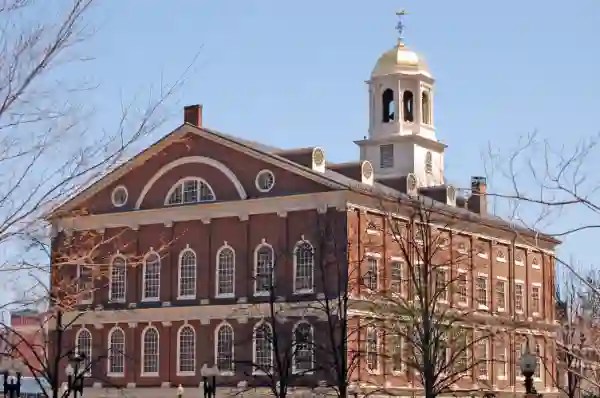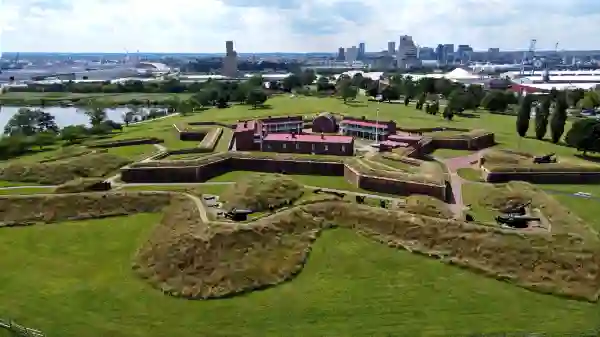Although America is a relatively young nation, it has an incredibly rich history. People often think of George Washington or Paul Revere when they think of America’s story. But there are actually a number of buildings that have played important roles as well.
So for all the facilities nerds out there like us at AkitaBox, here are 10 buildings that have earned their place in the history books.
Old South Meeting House
Location: Boston, Massachusetts
Role in History: The Old South Meeting House is a historic church building that served as a gathering place for massive public protest meetings against British actions in colonial Boston from 1768-75. It was here in December 1773 that a large public assembly was held that began the Boston Tea Party.
Facility Fun Fact: Built in 1729, it was the largest building in colonial Boston.
Website: https://www.thefreedomtrail.org/trail-sites/old-south-meeting-house
Fraunces Tavern
Location: New York City, New York
Role in History: Fraunces Tavern was a meeting place for revolutionaries, including George Washington. It was also the site of Washington’s farewell address to his officers in 1783.
Facility Fun Fact: It was originally built in 1719 as a home for Stephen DeLancey. The building was converted into a tavern by Samuel Fraunces in 1763.
Website: https://www.frauncestavernmuseum.org/
Faneuil Hall
Location: Boston, Massachusetts
Role in History: Known as “the cradle of liberty” and “the home of free speech,” Faneuil Hall is a historic marketplace and meeting hall in Boston. It was a central gathering place for revolutionary leaders and served as a platform for political speeches and debates. Notably, it hosted meetings where patriots, including Samuel Adams, rallied support for independence and resistance against British rule.
Facility Fun Fact: The most famous weathervane in Boston is a golden grasshopper that sits atop Faneuil Hall.

Website: https://www.thefreedomtrail.org/trail-sites/faneuil-hall
Old North Church
Location: Boston, Massachusetts
Role in History: Old North Church is famous for the “one if by land, two if by sea” signal that Paul Revere used to alert the colonists about the movements of British troops prior to the battles of Lexington and Concord.
Facility Fun Fact: It’s the oldest standing church building in Boston and still holds worship services today.
Website: https://www.oldnorth.com/
Carpenters’ Hall
Location: Philadelphia, Pennsylvania
Role in History: Carpenters’ Hall is a historic meeting hall in Philadelphia that hosted the First Continental Congress in 1774. This gathering of delegates from the Thirteen Colonies marked an important step towards independence.
Facility Fun Fact: 2024 marks the 250th anniversary of Carpenters’ Hall. The facility recently reopened after a comprehensive $3 million preservation project.
Website: https://www.carpentershall.org/
Colonial Williamsburg
Location: Williamsburg, Virginia
Role in History: Williamsburg was the capital of Virginia during the Revolutionary War. Colonial Williamsburg is a living-history museum that recreates an 18th-century American colonial town and offers visitors a chance to experience the daily life and events of that era. The buildings range from private residences and shops to public buildings like the Capitol and the Governor’s Palace.
Facility Fun Fact: There are approximately 88 original and reconstructed buildings in Colonial Williamsburg.

Website: https://www.colonialwilliamsburg.org/
Fort Ticonderoga
Location: Ticonderoga, New York
Role in History: Fort Ticonderoga is a well-preserved 18th-century star fort on Lake Champlain. The name “Ticonderoga” comes from an Iroquois word meaning “it is at the junction of two waterways.” During the Revolutionary War, when the British controlled the fort, it was attacked and captured on May 10, 1775, by the Green Mountain Boys and other state militia under the command of Ethan Allen and Benedict Arnold.
Facility Fun Fact: Fort Ticonderoga attracts more than 75,000 visitors each year with an economic impact of more than $12 million annually.
Website: https://www.fortticonderoga.org/
Independence Hall
Location: Philadelphia, Pennsylvania
Role in History: Originally built as the Pennsylvania State House, it housed all three branches of the state’s colonial government. It was here that the Declaration of Independence was adopted on July 4, 1776, and the United States Constitution was debated and signed in 1787.
Facility Fun Fact: Independence Hall is an example of Georgian architecture and has a total floor area of approximately 30,000 square feet.
Website: https://www.nps.gov/inde/index.htm
Museum of the American Revolution
Location: Philadelphia, Pennsylvania
Role in History: Although the building itself has no historical significance, it houses a treasure trove of history from America’s Revolutionary Period – including George Washington’s headquarters tent. The museum exhibits artifacts, documents, and interactive displays that chronicle the events and people of the era.
Facility Fun Fact: The museum is 118,000 square feet and includes theaters, interactive screens, and soundscapes.
Website: https://www.amrevmuseum.org/
The Old State House
Location: Annapolis, Maryland
Role in History: The Old State House in Annapolis is the oldest state capitol building in continuous legislative use in the United States. It played a significant role in Maryland’s involvement in the Revolutionary War and witnessed important events such as the ratification of the Treaty of Paris, officially ending the war. It’s also the only state house to have served as the nation’s capital.
Facility Fun Fact: The lightning rod atop the building’s dome is a “Franklin” rod, constructed and grounded to Benjamin Franklin’s specifications. The original lightning rod is still intact and has been serving for more than 225 years, although a steel sleeve has been placed around it to strengthen it.
Website: https://msa.maryland.gov/msa/mdstatehouse/html/home.html
Fort McHenry
Location: Baltimore, Maryland
Role in History: Fort McHenry is a historic star-shaped fort that defended Baltimore Harbor during the War of 1812. It’s famous for withstanding a British bombardment in September 1814, which inspired Francis Scott Key to write “The Star-Spangled Banner,” the national anthem of the United States.
Facility Fun Fact: The flag that flew over Fort McHenry, the Star Spangled Banner Flag, is on display there in a special exhibit that allows it to lie at a slight angle in dim light.

Website: https://www.nps.gov/fomc/index.htm